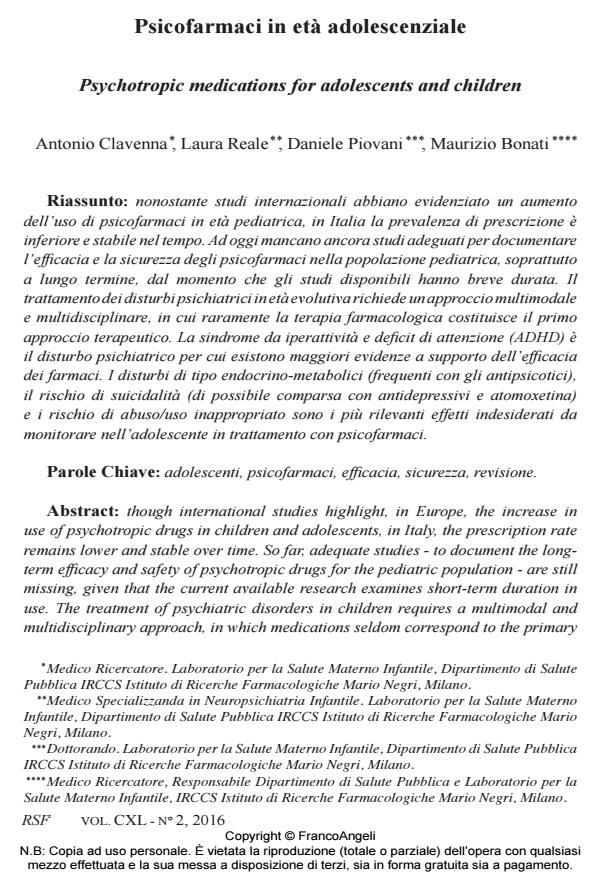Psicofarmaci in età adolescenziale
Titolo Rivista RIVISTA SPERIMENTALE DI FRENIATRIA
Autori/Curatori Antonio Clavenna, Laura Reale, Daniele Piovani, Maurizio Bonarti
Anno di pubblicazione 2016 Fascicolo 2016/2
Lingua Italiano Numero pagine 23 P. 79-101 Dimensione file 244 KB
DOI 10.3280/RSF2016-002006
Il DOI è il codice a barre della proprietà intellettuale: per saperne di più
clicca qui
Qui sotto puoi vedere in anteprima la prima pagina di questo articolo.
Se questo articolo ti interessa, lo puoi acquistare (e scaricare in formato pdf) seguendo le facili indicazioni per acquistare il download credit. Acquista Download Credits per scaricare questo Articolo in formato PDF

FrancoAngeli è membro della Publishers International Linking Association, Inc (PILA)associazione indipendente e non profit per facilitare (attraverso i servizi tecnologici implementati da CrossRef.org) l’accesso degli studiosi ai contenuti digitali nelle pubblicazioni professionali e scientifiche
Nonostante studi internazionali abbiano evidenziato un aumento dell’uso di psicofarmaci in età pediatrica, in Italia la prevalenza di prescrizione è inferiore e stabile nel tempo. Ad oggi mancano ancora studi adeguati per documentare l’efficacia e la sicurezza degli psicofarmaci nella popolazione pediatrica, soprattutto a lungo termine, dal momento che gli studi disponibili hanno breve durata. Il trattamento dei disturbi psichiatrici in età evolutiva richiede un approccio multimodale e multidisciplinare, in cui raramente la terapia farmacologica costituisce il primo approccio terapeutico. La sindrome da iperattività e deficit di attenzione (ADHD) è il disturbo psichiatrico per cui esistono maggiori evidenze a supporto dell’efficacia dei farmaci. I disturbi di tipo endocrino-metabolici (frequenti con gli antipsicotici), il rischio di suicidalità (di possibile comparsa con antidepressivi e atomoxetina) e i rischio di abuso/uso inappropriato sono i più rilevanti effetti indesiderati da monitorare nell’adolescente in trattamento con psicofarmaci.
Parole chiave:Adolescenti, psicofarmaci, efficacia, sicurezza, revisione
Antonio Clavenna, Laura Reale, Daniele Piovani, Maurizio Bonarti, Psicofarmaci in età adolescenziale in "RIVISTA SPERIMENTALE DI FRENIATRIA" 2/2016, pp 79-101, DOI: 10.3280/RSF2016-002006